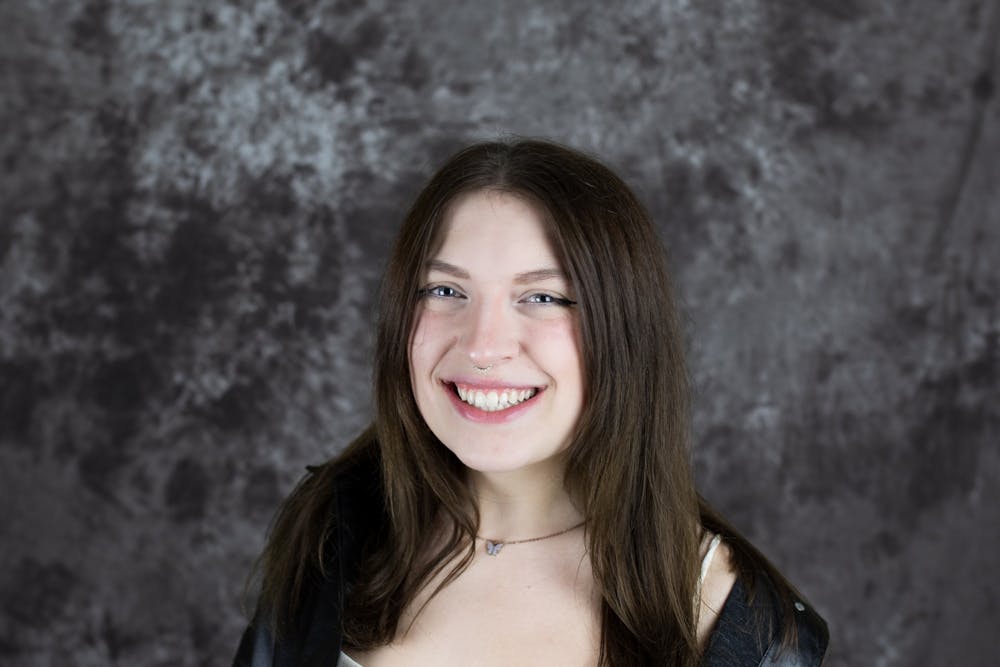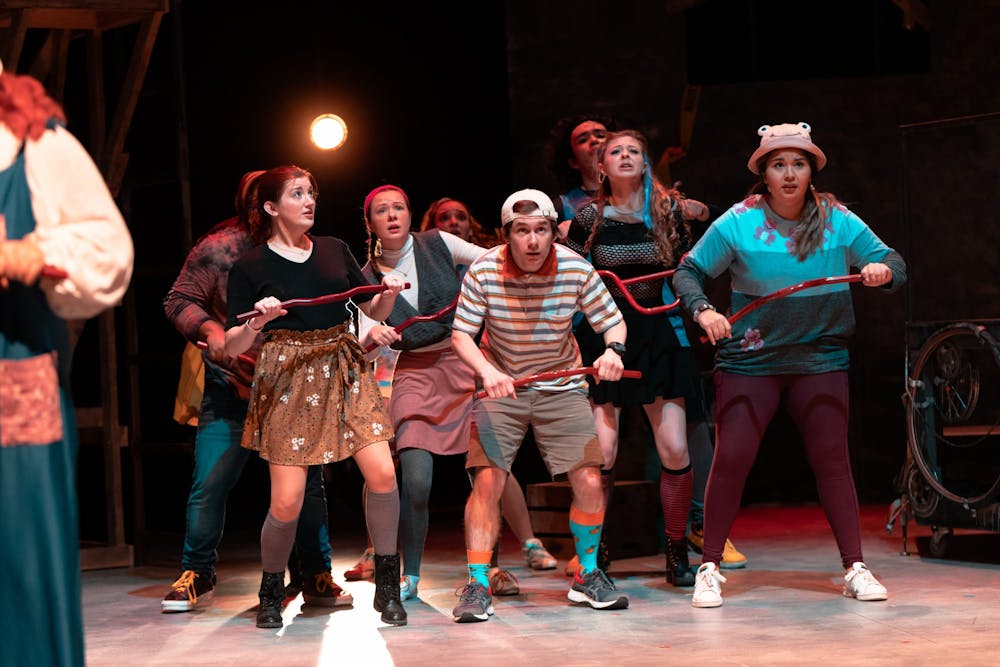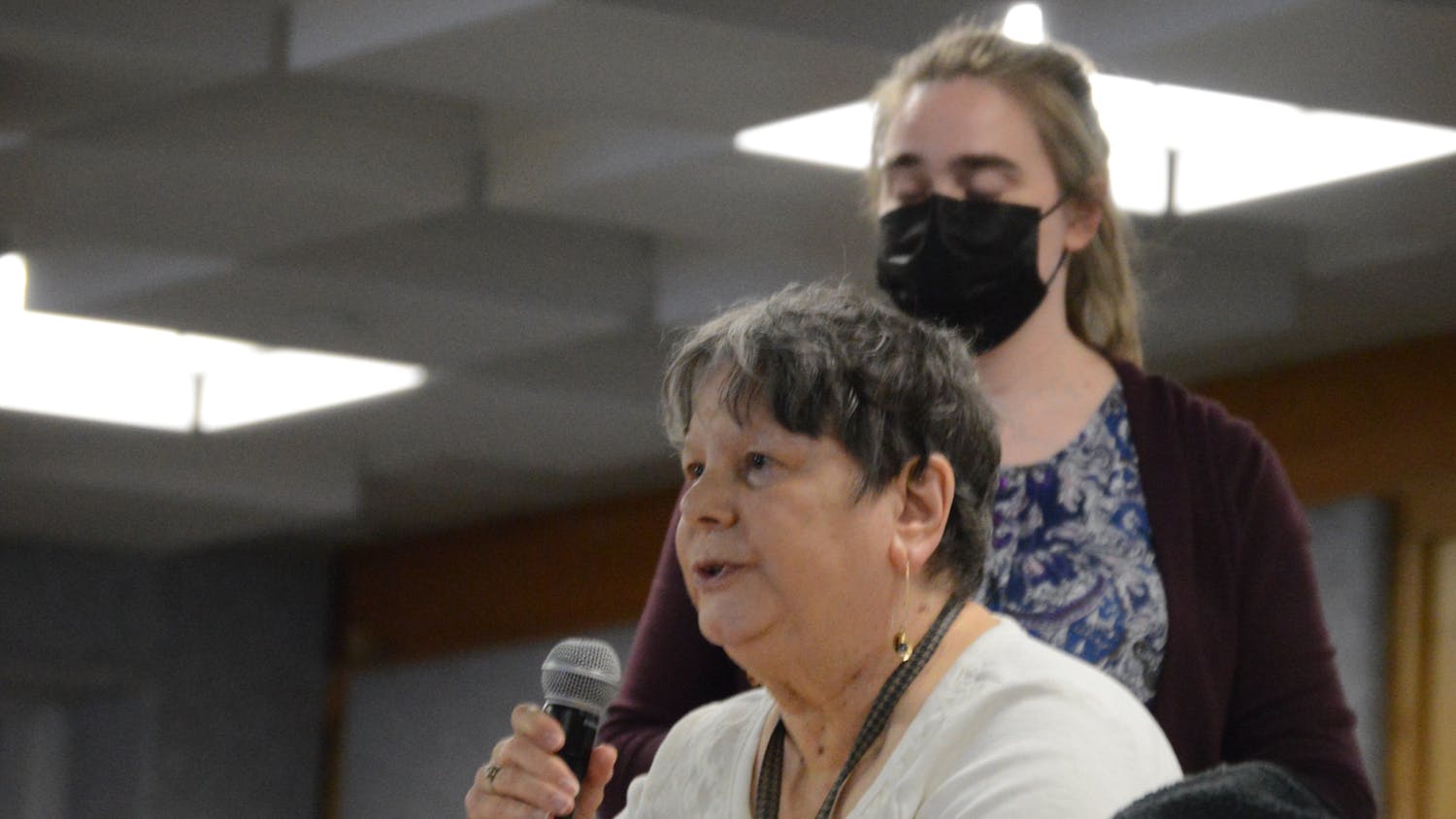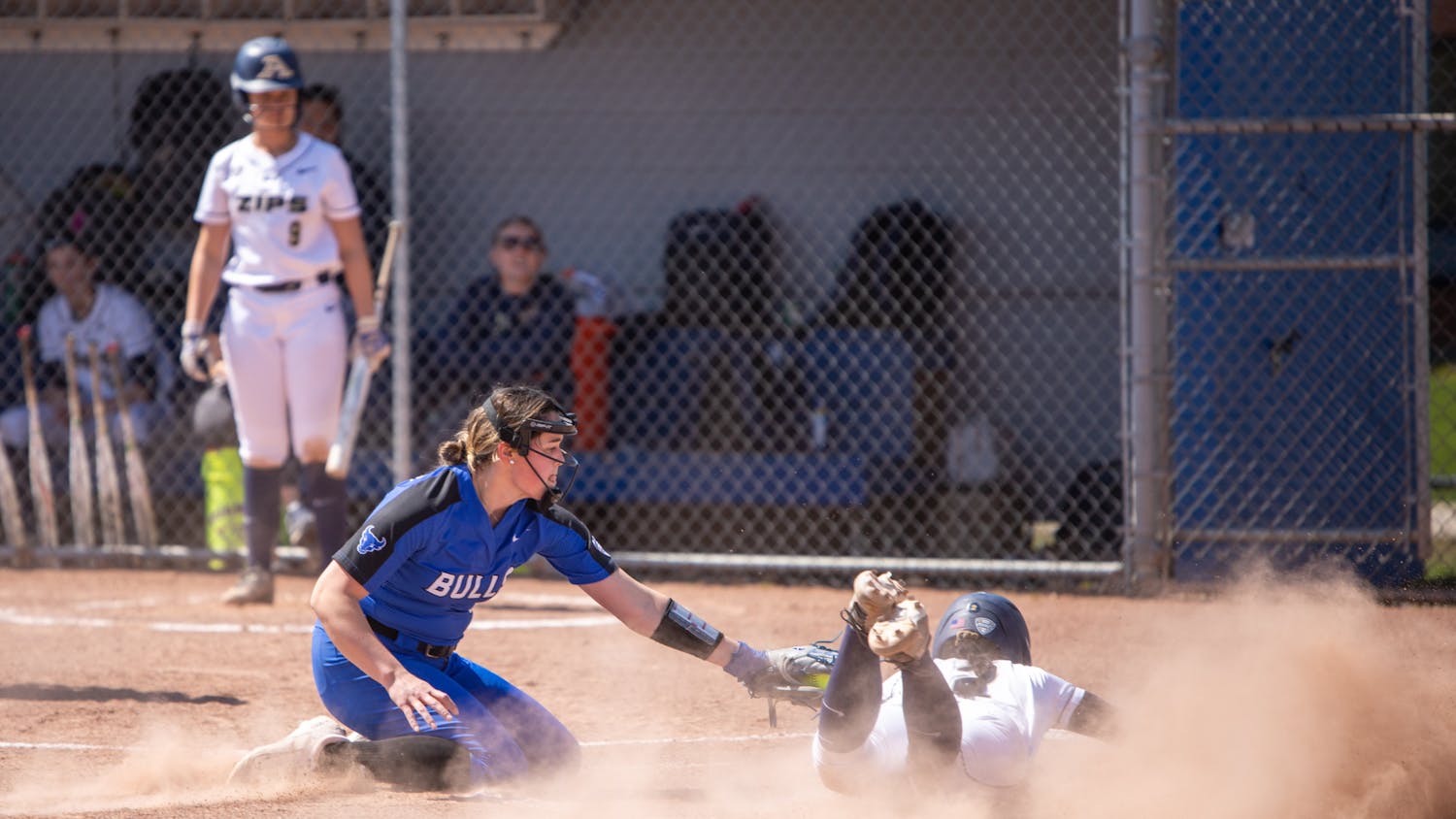As the lights die down on the stage, audience members cannot help but wonder what is about to take place. The objects around the stage seem to have no connection, and the confusion is only amplified when the actors run onto the stage wearing vastly different outfits.
And then they speak, passing around pieces of a bike, as if it is a microphone.
“Everyone will see you!”
“You will inspire envy!”
But these actors are not talking to each other, nor are they talking to the audience.
They are speaking as one, representing the internal dialogue of one wide-eyed 11-year-old who clearly loves their bike.
This is “Red Bike” by Caridad Svich, a play about a child whose inner-thoughts are spoken in succession by the play’s cast, which effectively represents a collective stream of consciousness.
Held in the Center for the Arts last weekend, “Red Bike” marked the first in-person performance for many Theatre students at the collegiate level.
Isabella Gomez-Barrientos, a sophomore music theatre major, says she was overjoyed to finally be performing on a UB stage — something she’s longed to do since she first applied to the school at the start of the pandemic.
“It felt so good to be back onstage. It was so nice to be able to see each other’s faces because we were unmasked. I guess it was just like one big release,” Gomez-Barrientos said. “It was an experience that I’m never going to forget after two very long years of not being able to be on stage with other people unless we’re six feet apart.”
Even with the focus on one character, the play featured a number of actors, each of whom aimed to represent a part of the life, mind and body of the child in their own right.
To help the cast tap into their own inner-11-year-olds, guest director Victoria Pérez-Maggiolo had her actors play numerous childhood games and even bring in their favorite toys to use when they had time.
“She also had us bring in things that had significance to us in our childhoods to get in that mindset to remember what it was like to be 11 years old,” Gomez-Barrientos said. “I think part of that process really helped us all get into the groove and reconnect with how we felt as 11 year olds.”
Despite representing the same form of conscience, the cast members all offered up their own expressions, as they wore a range of costumes and clothing that an 11-year-old would wear to evoke some part of the mind.
“It’s a very individual approach to the development of the character,” Pérez-Maggiolo said. “So all of them shined in multiple ways and then all of those discoveries and choices that were made started to influence how they moved on the stage.”
Gomez-Barriento chose to wear what she referred to as “athleisure,” consisting of brightly-colored and comfortably fitting athletic clothing. But the fashion variety was far greater than colors and materials.
“They had painted bright pink frogs all across it and then I had a bright pink hat that had frog eyes on it that looked like a frog,” Gomez-Barriento. “I guess I turned into some kind of frog girl who really likes pink.”
In order to fully evoke that inner 11-year-old, Pérez-Maggiolo made sure to consider input from all her actors during the production process.
“We did a lot of work on how to storytell together so that it is not merely the director’s idea,” Pérez-Maggiolo said. “It was really about me being able to express certain parameters and the certain way that we're going to tell the story, but then allowing for the liberty for them to bring the story to life.”
As “Red Bike” moved through this storytelling, it brought together an abstract conversation on capitalism and the perils that come with this economic system. For audience members, this was a particularly profound aspect of the play, especially with the scene on homelessness.
Here, as the projector lit up a “Please Help” sign, the actors sang like a haunting church choir, the main child expressing their frustration for being unable to help a homeless child.
“It was like a big ocean behind him of anger,” sophomore music theatre major Glen Chitty said.
The particular vulnerability of being limited in one’s own power was what really drove this scene home, according to audience members.
“You want to have fortune and sometimes you can’t at the capacity you’d like to,” Chitty said.
In delving into these larger themes and critiques of current U.S. society, audience members found the use of abstract storytelling, rather than a traditionally plotted story, to bolster their experience with the material.
“Since it was so abstract, and [used] so poetic language, it was a lot easier to watch a kid just pontificate about this red bike and how it could mean 1,500 different things,” junior musical theatre major Henry Elliot said.
The style of the play proved to be a point of interest for audience members who found novelty in capturing the human experience through this fluid manner.
“I feel like it’s more risky and experimental,” Elliot said. “I think we should be doing more theatre like that.”
More than just providing a newer way to engage with theatre and storytelling, audience members found that using the lens of a child to break down more difficult themes was particularly effective.
“[There’s] the relatableness of like, ‘Oh, we all wanted to be a little superstar,’” senior musical theatre major Kristen-Marie Lopez said, regarding the main character’s repeated desire to stand out.
While this may be Pérez-Maggiolo’s sole guest direction for UB, she effectively used her time to evoke an exciting performance that provides a glimpse into the future of UB’s theatre program.
Kara Anderson is the assistant arts editor and can be reached at kara.anderson@ubspectrum.com
Alex Falter is the senior arts editor and can be reached at alex.falter@ubspectrum.com

Alex Falter is a senior arts editor at The Spectrum.

Kara Anderson is a senior arts editor at The Spectrum. She is an English and Spanish double major and is pursuing a certificate in creative writing. She enjoys baking chocolate chip cookies, procrastinating with solitaire and binging reality TV on the weekends.





